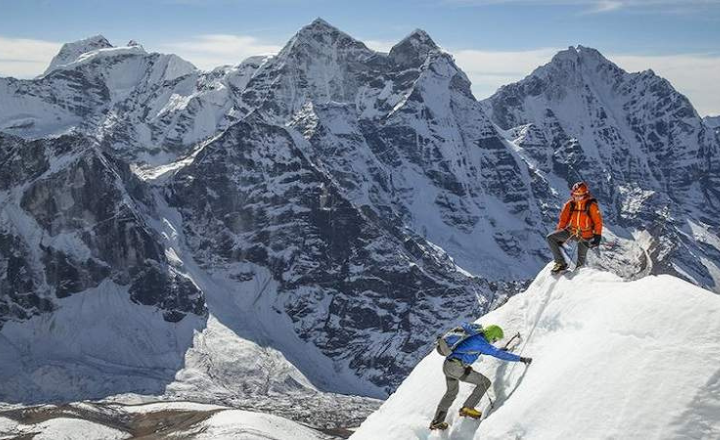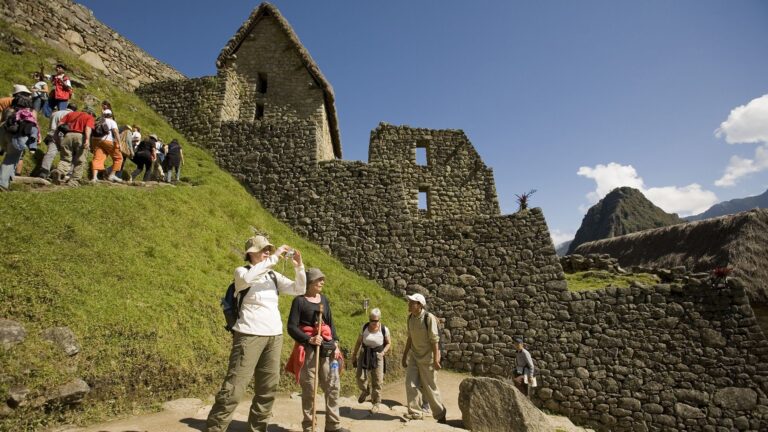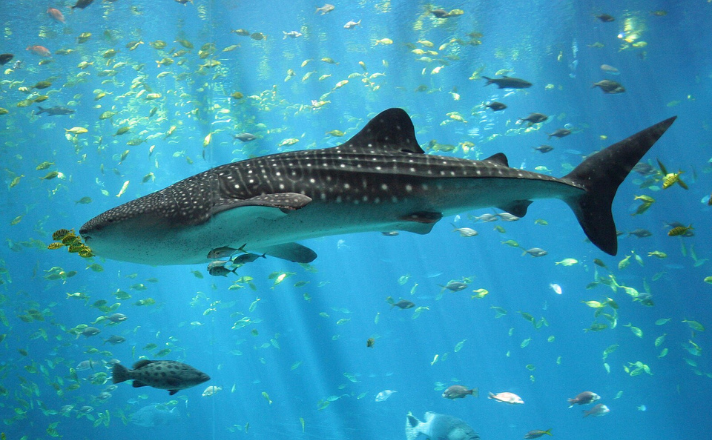The Ultimate Guide to Mountaineering in the Philippines 2025
The Philippines is home to over 7,000 islands, each offering unique landscapes and breathtaking peaks waiting to be conquered. In “The Ultimate Guide to Mountaineering in the Philippines 2025,” we’ll explore the best climbing destinations, essential points, and expert tips to help you embark on your next adventure.
Whether you’re a seasoned climber or an inexperienced traveler looking for your first time, this guide will help you with everything you need to appreciate the majestic mountains of this tropical paradise. Get ready to discover the thrill of reaching new heights in one of the world’s most exciting sights in the Philippines.
With its diverse lands and amazing prospects, the Philippines has emerged as a premier destination for mountaineering enthusiasts. In “The Ultimate Guide to Mountaineering in the Philippines 2025,” we’ll delve into must-visit trails, safety tips, and local insights that will enhance your climbing experience.
By the end of this article, you’ll be fully prepared to embark on an unforgettable journey through the peaks and valleys of this beautiful country.
Best Mountains to Climb in the Philippines (Beginner to Advanced)
- The Philippines, a treasure trove of natural wonders, offers an array of mountains that cater to climbers of all skill levels.
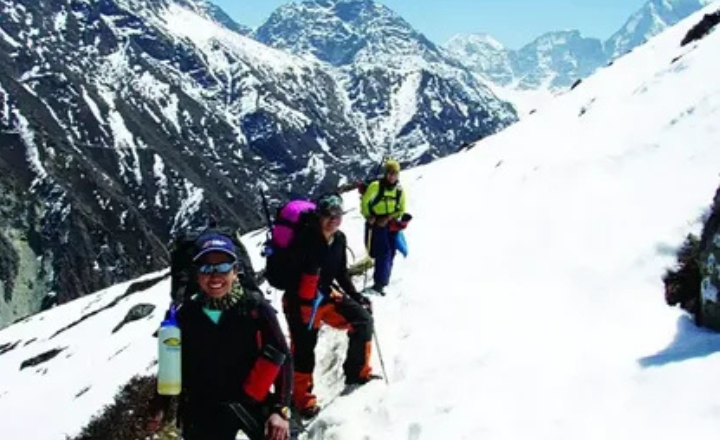
Beginner-Friendly Peaks
- For beginners,
Mount Pulag stands out with its iconic sea of clouds and vibrant flora in Philipine mountains. Its well-marked trails guide novices through a captivating landscape, making it an ideal starting point for those looking to experience the thrill of climbing without overwhelming challenges. Meanwhile, the stunning sunrise views from its summit reward every step taken.
- For intermediate climbers,
Mount Batulao provides a more rugged terrain with diverse trails that challenge your skills while offering breathtaking panoramas of Batangas. The winding paths and rolling hills create a dynamic experience, perfect for those seeking a bit of adventure without the risks associated with more technical climbs.
- On the advanced end
Mount Apo, the country’s highest peak, beckons seasoned climbers with its challenging terrain and rich biodiversity. The ascent demands not just physical endurance but also a deep appreciation for the vibrant ecosystems that thrive in its slopes, culminating in a rewarding experience that merges adventure with environmental awareness. Each mountain tells a story, inviting climbers to explore not just their heights but also the rich cultural tapestry woven into their surroundings.
For those venturing into the world of climbing, the Philippines offers a treasure trove of beginner-friendly peaks that promise stunning views without overwhelming challenges. One standout option is Mount Pulag, renowned for its sea of clouds and diverse ecosystems. With well-marked trails and a range of difficulty levels, it’s an ideal starting point for novice climbers eager to experience the beauty of nature while gradually building their skills.
Intermediate Mountains
Another gem is Mount Taal, a relatively easy climb that rewards climbers with panoramic views of the surrounding lakes and volcanic landscapes. Its accessibility makes it one of the best mountains to climb in the Philippines for beginners, allowing first-timers to focus on enjoying the journey rather than guiding false paths.
Beyond these iconic peaks, consider exploring lesser-known trails like Mount Marami or Mount Batulao, which offer equally breathtaking scenery and a chance to connect with fellow adventurers. Embrace these beginner-friendly climbs as not just physical challenges but as gateways to appreciating the rich natural heritage of the Philippines.
Intermediate mountains in the Philippines offer a thrilling blend of challenge and accessibility, making them ideal for climbers looking to elevate their skills without diving into the most daunting peaks. These mountains, such as Mount Pulag and Mount Taal, provide not only breathtaking views but also diverse ecosystems that can enrich the climbing experience. As you go up, the transition from rich forests to alpine grasslands is a testament to the rich biodiversity found in these regions, making every step a discovery.
Climbing these intermediate peaks allows you to sharpen your exciting experience of their techniques while still being surrounded by stunning landscapes. Mount Pulag, known for its sea of clouds, is perfect for those who want to experience a sunrise that feels otherworldly, while Mount Taal offers the unique thrill of trekking around an active volcano.
The combination of physical exertion and the natural beauty of the Philippines makes these mountains some of the best to climb, catering to both beginners looking to push their limits and more experienced hikers seeking new challenges. Each ascent is not just about reaching the summit; it’s about immersing oneself in nature’s grandeur and sharing unforgettable moments with fellow climbers.
Advanced & Multi-Day Climbs
For those seeking to push their limits, the Philippines boasts a plethora of advanced and multi-day climbs that promise both challenge and breathtaking views. The majestic peaks of Mount Pulag, renowned for its sea of clouds, and Mount Apo, the country’s highest, offer seasoned climbers an exciting experience. These climbs not only test your physical endurance but also immerse you in diverse ecosystems, from mossy forests to alpine meadows.
Embarking on these multi-day adventures allows climbers to forge deeper connections with nature and fellow adventurers.
Mount Kitanglad reveals the rich cultural heritage of local communities, adding layers of meaning to your trek. For those seeking the best mountains to climb in the Philippines, transitioning from beginner to advanced levels can be a transformative journey, blending challenge with an appreciation for the stunning landscapes and cultural richness that define this extensive archipelago.
Planning Your Mountaineering Trip
If you’re serious about mountaineering in the Philippines, a little planning goes a long way. Sure, there’s room for spontaneity… like joining a last-minute Trail Adventours group hike or saying yes to a friend’s invitation two days before the climb.
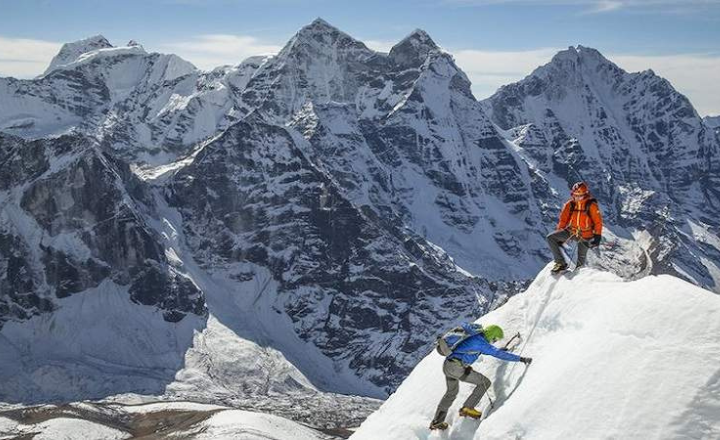
But for most trails, especially the more remote or technical ones, you’ll want to map out the basics. Timing, permits, weather even snacks. Yep, snacks matter more than you think.
Best Seasons to Climb
When planning your mountaineering trip, timing can be as crucial as the equipment you choose. The best seasons to climb often depend on the mountain range and its unique weather patterns. For instance, summer (dry season), June to November, is typically ideal for many alpine climbs in the Northern Hemisphere, offering longer days and more stable weather.
However, some lesser-known peaks in the same regions may present perfect conditions during late spring or early fall, when fewer climbers are on the trails and the scenery is often breathtakingly exciting. Beyond just seasonal weather, consider the cultural aspects of climbing during different times of the year.
Some Winter (cool season), December to May, regions celebrate climbing festivals or local traditions that can enrich your experience and provide opportunities to connect with fellow adventurers. Additionally, shoulder seasons, those transitional periods between peak seasons, can reveal a landscape transformed; think wildflowers blooming in the spring or vibrant autumn leaves.
Embracing these subtler times can lead to a more intimate experience with nature, allowing you to savor the solitude and beauty of the mountains without the hustle of crowds.
Permits & Local Guidelines
When planning your mountaineering trip, navigating the maze of permits and local guidelines is crucial to ensure both safety and compliance. Many popular climbing destinations have specific regulations designed to protect the environment and enhance the experience for all adventurers.
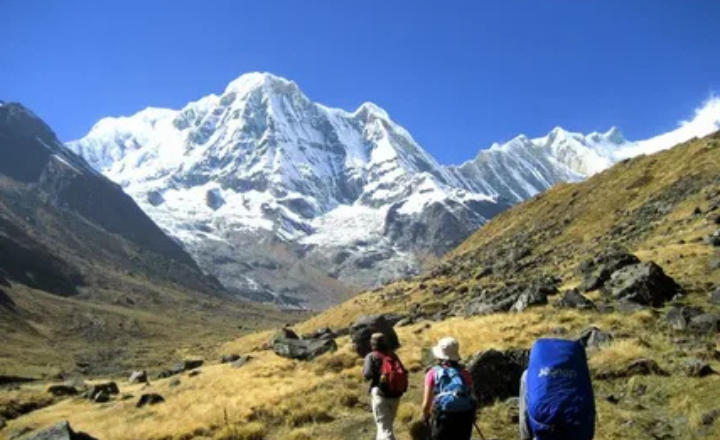
- DENR permits (Department of Environment and Natural Resources)
- LGU clearances (Local Government Units)
- Sometimes… approvals from tribal councils, especially in regions like Mt. Apo or parts of the Cordilleras
For instance, certain national parks require climbers to secure backcountry permits, while others may limit the number of climbers allowed on popular routes to reduce overcrowding and preserve the natural beauty of Mountaineering in the Philippines. Understanding these requirements not only helps you avoid fines but also fosters a sense of responsibility towards the places we explore.
In addition to permits, it’s essential to familiarize yourself with local guidelines that govern climbing practices. This includes understanding seasonal restrictions, wildlife protection measures, and Leave No Trace principles that help maintain the integrity of fragile ecosystems.
Engaging with local climbing communities or forums can provide valuable insights into current conditions and best practices. By respecting these rules, you’re not just ensuring your own safety; you’re contributing to the sustainable future of mountaineering, paving the way for generations of adventurers to come.
Hiring Guides and Porters
When planning your mountaineering trip, hiring guides and porters can significantly enhance your experience, transforming a challenging tour into a memorable adventure. Professional guides not only possess extensive knowledge of the landscape but also bring valuable skills in navigation, safety protocols, and local culture.
Their expertise allows you to focus on the excitement of climbing, while they handle logistical challenges, from route selection to weather forecasting. Moreover, engaging a local guide fosters a deeper connection with the region, often unveiling hidden gems that solo adventurers might overlook.
Porters play an equally crucial role, ensuring that you can carry the essentials without being weighed down by excessive baggage to visit on mountaineering Philpines. Their strength and familiarity with the mountains enable them to show tough trails efficiently, allowing you to conserve your energy for the act of climbing.
Additionally, hiring porters supports the local economy and promotes sustainable tourism practices, creating a win-win scenario for both trekkers and the communities they visit.
By incorporating guides and porters into your planning, you’re not just investing in safety and convenience; you’re enriching your overall mountaineering experience.
What to Pack for Mountaineering in the Philippines
When preparing for an exhilarating mountaineering adventure in the Philippines, a well-thought-out gear checklist is crucial to ensure safety and enjoyment.
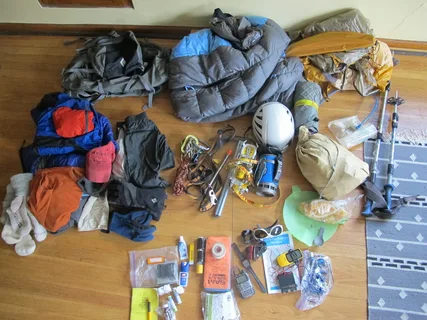
Gear Checklist
The unpredictable weather conditions and diverse terrains demand that you pack thoughtfully. Here’s a comprehensive table format checklist to guide your packing process:
- Gear Category
Clothing to moisturize, including base layers, an insulated jacket, and rain gear. Layering is key to adapting to temperature changes.
Footwear: Sturdy hiking boots, camp shoes. Ensure boots are broken in to avoid blisters.
Camping Gear: Lightweight tent, sleeping bag (appropriate for conditions), sleeping pad. Opt for a tent that can withstand high winds.
Navigation Map, compass, GPS device. Familiarize yourself with local trails and landmarks.
Safety Equipment: First aid kit, headlamp with extra batteries. Always carry a whistle for emergencies.
Cooking Supplies: Portable stove, lightweight cookware, reusable utensils. Consider bringing a compact multi-tool for versatility.
Having this checklist not only streamlines your packing process but also helps ensure you have all the necessary items for the unique challenges posed by the Philippine mountains. Remember that every item on your list should serve a purpose, aim for a balance between essential equipment and weight management to enhance your experience on the trail. By packing wisely, you’ll be ready to embrace the stunning landscapes and rich biodiversity that await you in this tropical paradise.
Tropical-Specific Essentials
When planning your mountaineering adventure in the Philippines, it’s essential to consider the unique tropical climate that can dramatically affect your experience. Packing lightweight, moisture-wicking clothing is paramount; opt for breathable fabrics that keep you cool while also protecting from the sun’s harsh rays.
Water-resistant and quick-drying options can make all the difference when navigating through lush trails or crossing streams.
In addition to standard gear, tropical-specific essentials should include insect repellent and a reliable waterproof bag to protect your electronics and personal items from sudden downpours. Consider bringing portable water purification solutions, as access to clean drinking water can be unpredictable on remote trails.
Lastly, a compact first-aid kit tailored for tropical ailments, such as heat exhaustion and mosquito bites, will ensure you’re prepared for any unexpected situations. By focusing on these specialized items, you’ll enhance not only your safety but also your overall enjoyment of the stunning landscapes that the Philippines has to offer.
Safety Tips & Trail Etiquette
When visiting on a mountaineering adventure in the Philippines, prioritizing safety should be at the forefront of your preparations. Beyond the essentials of what to pack for mountaineering in the Philippines, such as sturdy footwear, hydration systems, and weather-appropriate clothing, consider including a comprehensive first aid kit and navigation tools like a compass or GPS device.
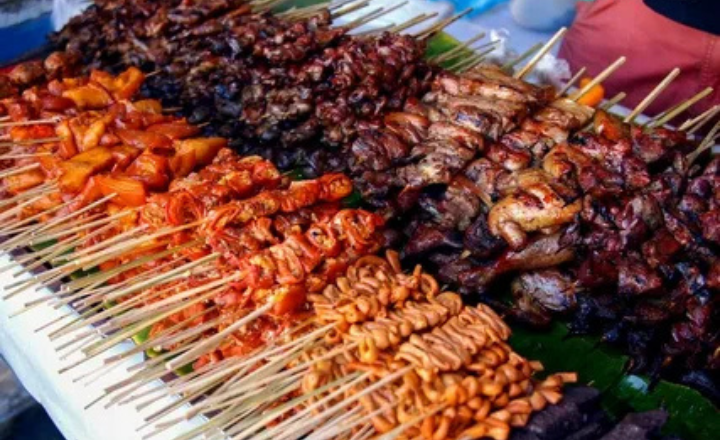
Know Your Limits
Knowing your limits is crucial, especially when going on an adventure like mountaineering in the Philippines. Understanding your physical and mental boundaries allows you to make informed decisions about what to pack for mountaineering in the Philippines. A well-thought-out packing list that aligns with your capabilities not only enhances your experience but also ensures your safety.
Before hitting the trails, consider your fitness level and experience. Packing lightweight gear such as breathable clothing and compact hydration systems can significantly ease your journey. Additionally, it’s essential to include essentials like first-aid kits and emergency supplies that cater to your specific needs.
Remember, the thrill of conquering a mountain should never overshadow the importance of self-awareness and preparation; knowing when to push forward and when to turn back can make all the difference between a memorable adventure and a perilous situation. Train for elevation gain if you’re eyeing mountains like Mt. Apo or Mt. Halcon.
Familiarize yourself with the trail conditions and local wildlife before you head out. Being well-informed can help you avoid potential hazards and enhance your overall experience.
Trail etiquette plays a crucial role in preserving the beauty of the natural environment and ensures that all adventurers enjoy their journey. Here’s a quick rule of thumb:
- Below 1,000m: Low effort, good for starters
- 1,000–2,500m: Medium effort, train a bit
- Above 2,500m: High-altitude. Prep seriously.
Always yield to those ascending when navigating narrow paths, as they have the right of way. Additionally, practice Leave No Trace principles by packing out what you pack in; this includes minimizing waste and respecting wildlife habitats.
As you explore the breathtaking landscapes of moutaineeing in the Philippines, engage with fellow hikers respectfully, sharing tips and experiences that can enrich everyone’s understanding of these majestic trails. A little consideration goes a long way in fostering a community that values both adventure and preservation.
Leave No Trace Principles
The Leave No Trace principles serve as a guiding philosophy for outdoor enjoyment, emphasizing the importance of preserving our natural spaces while enjoying them.
- By practicing these principles, we not only protect ecosystems but also enhance our own experiences in nature. For instance, understanding how to properly dispose of waste is not just about cleanliness; it’s about safeguarding wildlife and maintaining the integrity of the trails we cherish. This is where trail etiquette comes into play.
- Being mindful of where we step and how we interact with our surroundings ensures that future generations can great enjoyment and the same beauty we do today.
- Incorporating safety tips into your outdoor adventures aligns seamlessly with Leave No Trace ethics. For example, planning not only prepares you for potential difficulties but also minimizes your impact on the environment.
- By sticking to designated trails, you reduce soil erosion and protect fragile habitats, all while keeping yourself safe from the risks of unexplored paths.
- Highlighting these principles transforms each hike into a conscious act of guardianship, where every step taken becomes a commitment to the land, fostering a deeper connection with nature while ensuring its preservation for all to enjoy.
Emergency Contacts and Procedures
In moments of crisis, having a well-organized list of emergency contacts can be a lifeline, both literally and figuratively. Beyond just the usual family members and friends, consider including local resources like poison control, nearby hospitals, and even your veterinarian.
Each contact should be accompanied by their relationship to you and their availability times, ensuring that in the chaos of an emergency, you have a clear roadmap for who to reach out to first. This small addition can save precious minutes when every second counts.
What helps:
- Register with the LGU or park ranger. Always. Even if it feels bureaucratic.
- Tell someone your expected return time.
- Know basic signs of heat stroke (dizziness, nausea, rapid pulse) and hypothermia (shivering, disorientation, blue lips).
- Carry a whistle. It travels farther than your voice when you need help.
Moreover, establishing clear procedures for various types of emergencies, be it a fire, medical issue, or natural disaster, can empower everyone in your household or workplace to respond effectively.
Cultural & Spiritual Significance of Philippine Mountains
Mountains in the Philippines are not just breathtaking natural wonders; they are revered as sacred spaces imbued with cultural and spiritual significance. For many Indigenous communities, these towering giants are seen as ancestral homes, embodying the spirits of ancestors and deities that guide their daily lives.
Mountains with Indigenous and Religious Importance
The majestic Mount Apo, the country’s highest peak, is particularly significant for the Lumad people, who regard it as a living entity that must be respected and protected. Climbing this mountain is more than a physical journey; it is a pilgrimage steeped in tradition, where each step is a prayer and an offering to the spirits dwelling within.
In addition to their Indigenous importance, many Philippine mountains hold deep religious meaning, often serving as sites for rituals and pilgrimages.
Mount Banahaw, considered a holy mountain by various Christian sects and local cults, attracts thousands of pilgrims each year seeking spiritual renewal. The intertwining of Indigenous beliefs with Christianity creates a unique tapestry of spirituality where the mountains act as conduits between the earthly and the divine.
This harmonious relationship between nature and spirituality prompts us to reflect on the broader implications of environmental stewardship, urging society to protect these sacred spaces for future generations while honoring the rich cultural narratives they embody.
How to Respect Local Beliefs During Your Climb
When going on a climbing adventure in a new region, understanding and respecting local beliefs is not just a matter of courtesy; it’s essential for fostering goodwill and enriching your experience. Many climbing sites are considered sacred by local communities, and acknowledging this can deepen your connection to the environment.
For instance, some mountains are viewed as the homes of spirits or deities, and climbing them without proper respect can be seen as an insult
Here’s how to move respectfully:
- Ask before taking photos, especially in ceremonial areas or if locals are present.
- Stay silent or speak softly in marked sacred spaces.
- Don’t laugh off rituals. Even if they seem unusual, they matter to someone.
Engage with local guides or community members to gain insights into their customs. This interaction not only enhances your understanding but also demonstrates your commitment to respecting their beliefs.
Scenic Highlights & Photo-Worthy Spots
Nestled between the rugged cliffs and serene waters, the coastline offers a treasure trove of scenic highlights that promise to captivate any visitor. One standout spot is the hidden cove known as Crescent Bay, where golden sands meet azure waves, creating an idyllic backdrop for photography enthusiasts.
As the sun dips below the horizon, the sky bursts into a kaleidoscope of colors, providing a natural canvas that transforms every snapshot into a work of art. Sometimes, a mountain’s magic doesn’t hit you until you’re standing at the summit, wind in your face, silence pressing around you.
The interplay of light and shadow as clouds dance across the landscape creates an ever-changing scene that invites exploration and reflection. Don’t forget to bring your camera; each moment is a reminder that nature is the ultimate artist, crafting masterpieces that are just waiting to be captured.
Sea of Clouds & Sunrise Views
As dawn breaks, the world transforms into a surreal canvas where the sky meets the earth in an ethereal dance. The sea of clouds, often mistaken for a foggy haze, rolls over valleys and mountains, creating an undulating landscape that feels both familiar and alien. Standing at the precipice of a viewpoint, one can’t help but feel a profound sense of connection to nature, as if you are witnessing the birth of a new day in its purest form.
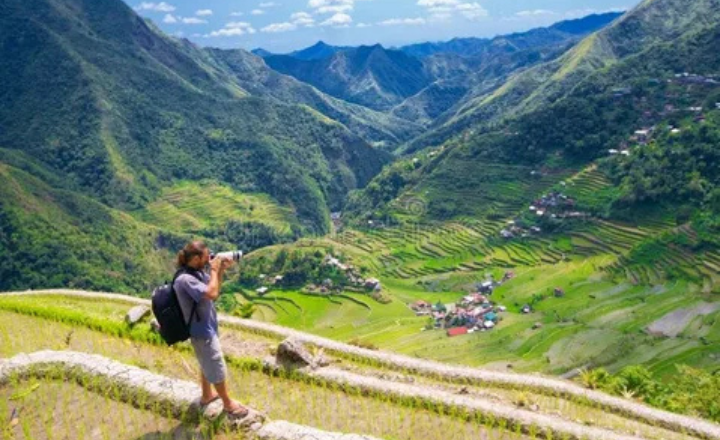
Other good sunrise viewpoints:
- Mt. Ulap (Benguet) panoramic and beginner-friendly
- Mt. Marami (Cavite) is known for its rocky outcrop and minimal crowds
Get there by 4 AM. Sounds early, I know. But that pre-dawn chill, the quiet shuffle of hikers climbing by headlamp it sets the tone.
Waterfalls & River Crossings
Philippine trails often weave through water from trickling streams to full-blown rivers you need to cross barefoot, boots tied to your pack.
Here are a few notable ones:
- Mt. Romelo (Laguna): A favorite for beginners, with multiple waterfalls at different altitudes.
- Mt. Balagbag (Rizal): Modest, but good for learning river etiquette and water filtration methods.
Rare Flora and fauna
Nestled within the diverse ecosystems of the Philippine mountains, rare flora and fauna not only contribute to biodiversity but also embody deep cultural and spiritual significance. For many local communities, these unique species are more than just elements of their environment; they are woven into the fabric of their ancestral beliefs and practices.
The endangered Rafflesia, with its striking blooms, is revered in local lore as a symbol of life and death, often associated with healing rituals. Such plants serve as living testaments to the intricate relationships between nature and spirituality, highlighting how conservation efforts can preserve both biodiversity and cultural heritage.
Solo vs Group Hikes – What’s Best in the Philippines?
So, here’s a question that every new hiker asks eventually: should I go solo… or join a group? Both have their charm. And both come with caveats.
Pros & Cons of Each
Solo Hiking:
- Freedom to go at your own pace, stop when you want, and eat whatever you packed
- A deeper connection with nature, no chatter, just you and the trail
- But… no one to help if something goes wrong. And some trails can get eerily quiet, especially after lunch when bird sounds fade and you’re alone with your thoughts
Group Hiking:
- Built-in safety net, someone always has a power bank or extra water
- You’ll probably make trail friends, hear funny stories, or learn gear hacks
- Waiting for the slowest person… or having to match the energy of a super hyped group when you just want to move slow and breathe
When to Hire a Group Tour
Hiring a group tour can be an enriching experience, especially when exploring the Cultural & Spiritual Significance of the Philippine Mountains. These majestic peaks are not just breathtaking landscapes; they are sacred sites steeped in history and tradition.
When planning a visit to these respected mountains, a group tour can provide invaluable insights from local guides who are deeply connected to the cultural narratives surrounding each site. This is particularly important in the Philippines, where indigenous communities often share their spiritual practices and beliefs tied to the land.
Moreover, a group tour fosters a sense of community among travelers, allowing for shared experiences that enhance your understanding of the local culture. Engaging with fellow tourists can lead to discussions about the spiritual significance of the mountains and how they relate to broader themes of nature and identity.
Additionally, navigating remote trails or accessing lesser-known sites becomes much easier with a knowledgeable guide, ensuring you make the most of your exploration while respecting local customs and traditions. Ultimately, choosing a group tour to Mountaineering in the Philippines, not only enriches your journey but also deepens your appreciation for the profound connections between the people and their sacred landscapes in the Philippines.
Conclusion
So this is your sign to finally go for that climb. Maybe. Maybe not today. But at some point, you’ll crave something more than beaches or city lights. You’ll want quiet. Trees. Sky.
And that’s when The Ultimate Guide to Mountaineering in the Philippines might come back to you. With its winding jungle paths, volcanic ridges, and cloud-covered summits… this country has a mountain for everyone.
Whether you’re just starting with easy trails or you’re deep into exploring the best mountaineering in the Philippines, there’s always another peak calling.
Just remember:
- Train smart
- Pack light (but wisely)
- Respect every trail like it’s someone’s home… because, honestly, it often is
Oh, and when you finally hit that summit, don’t rush. Sit. Breathe. Let it sink in.
Which mountain are you climbing next? Drop your dream summit in the comments… and maybe I’ll see you there.
FAQs
1. Do I need to train before climbing in the Philippines?
Yes, especially if it’s your first time or you’re eyeing a peak above 1,500 meters. Even “easy” climbs like those listed under mountains to hike in the Philippines for beginners still test your stamina in tropical heat. Just start walking regularly, add a backpack, and you’ll feel the difference fast.
2. What’s the best beginner mountain in the country?
Tough call, but Mt. Batulao, Mt. Manabu, and Mt. Pico de Loro are great picks. They’re scenic, fairly accessible, and they’ve got a bit of everything: ridges, forests, and yes, a little challenge.
3. Are there hiking clubs I can join?
If you’re local, you’ve probably heard of Samar Mountaineering and Outdoor Club, or the Tarlac Mountaineering Club. There’s also the MOUNTAINEERING FEDERATION OF THE PHILS. INC., which connects a bunch of regional groups.

